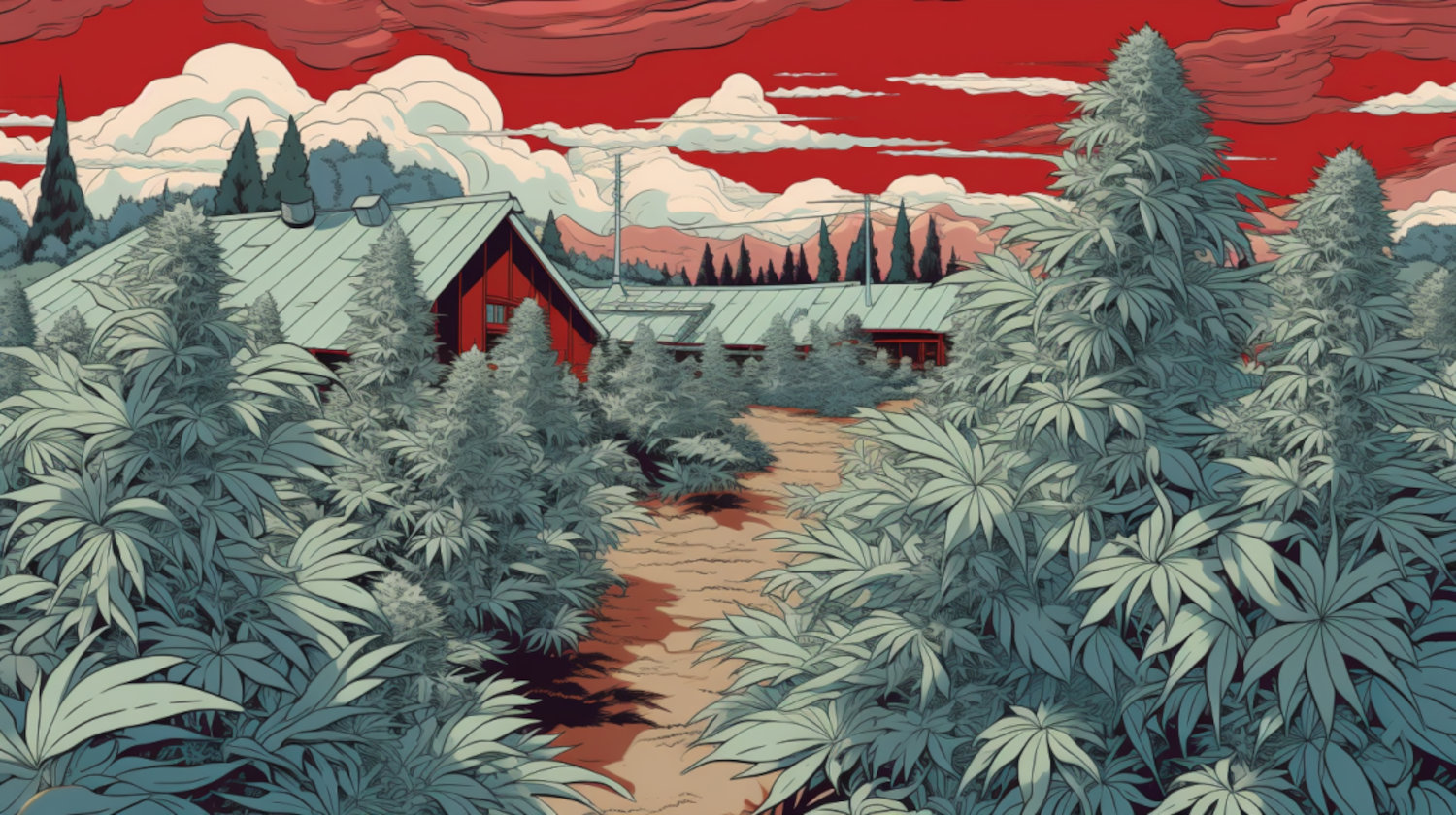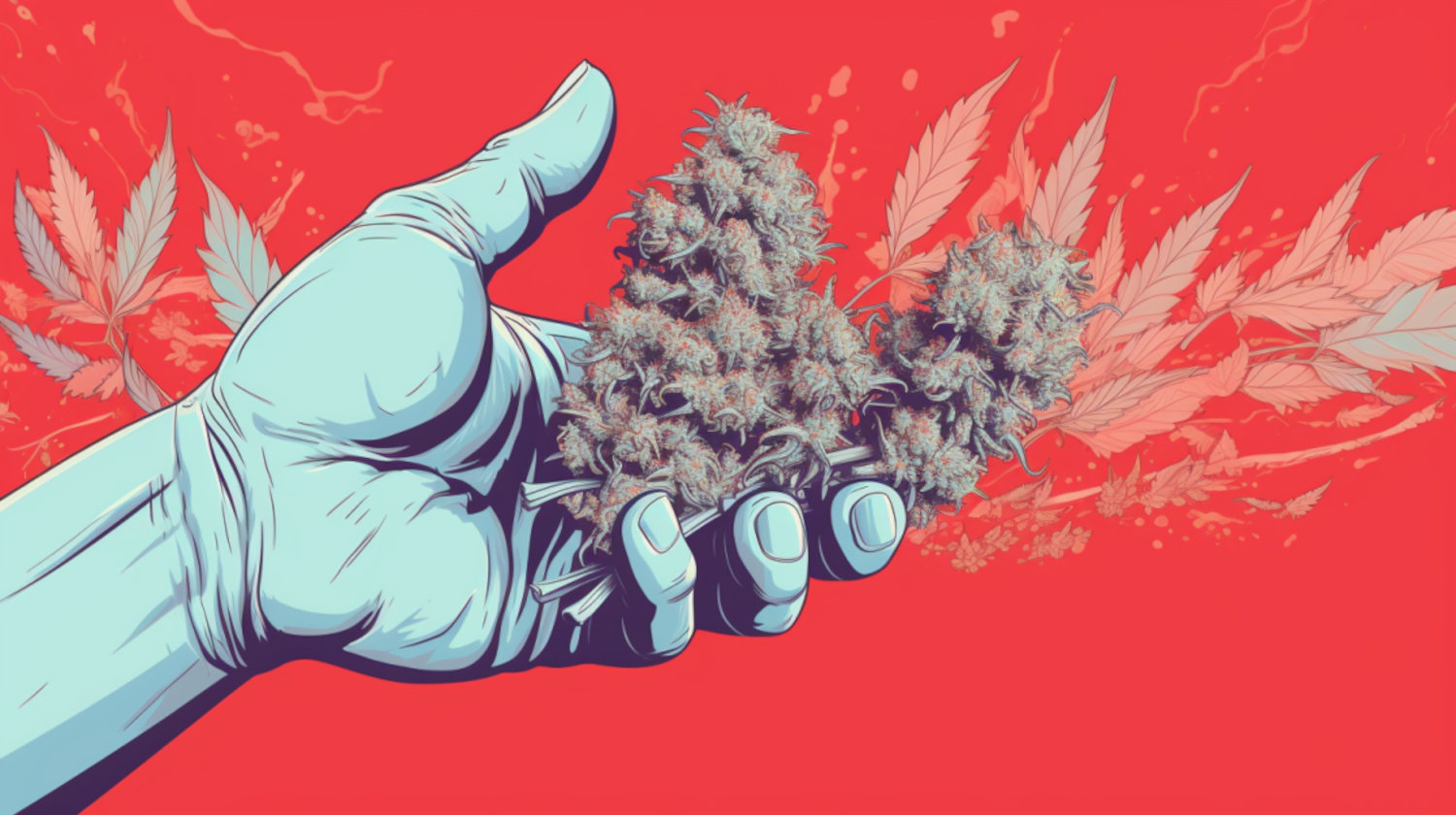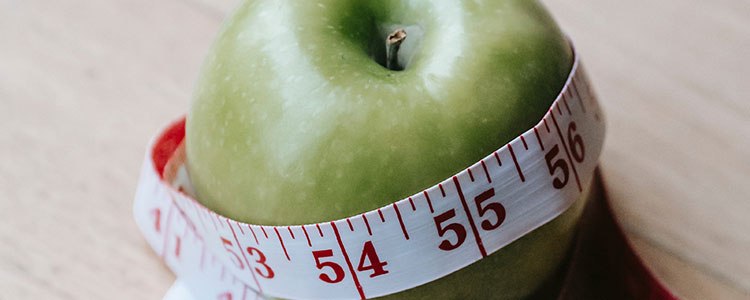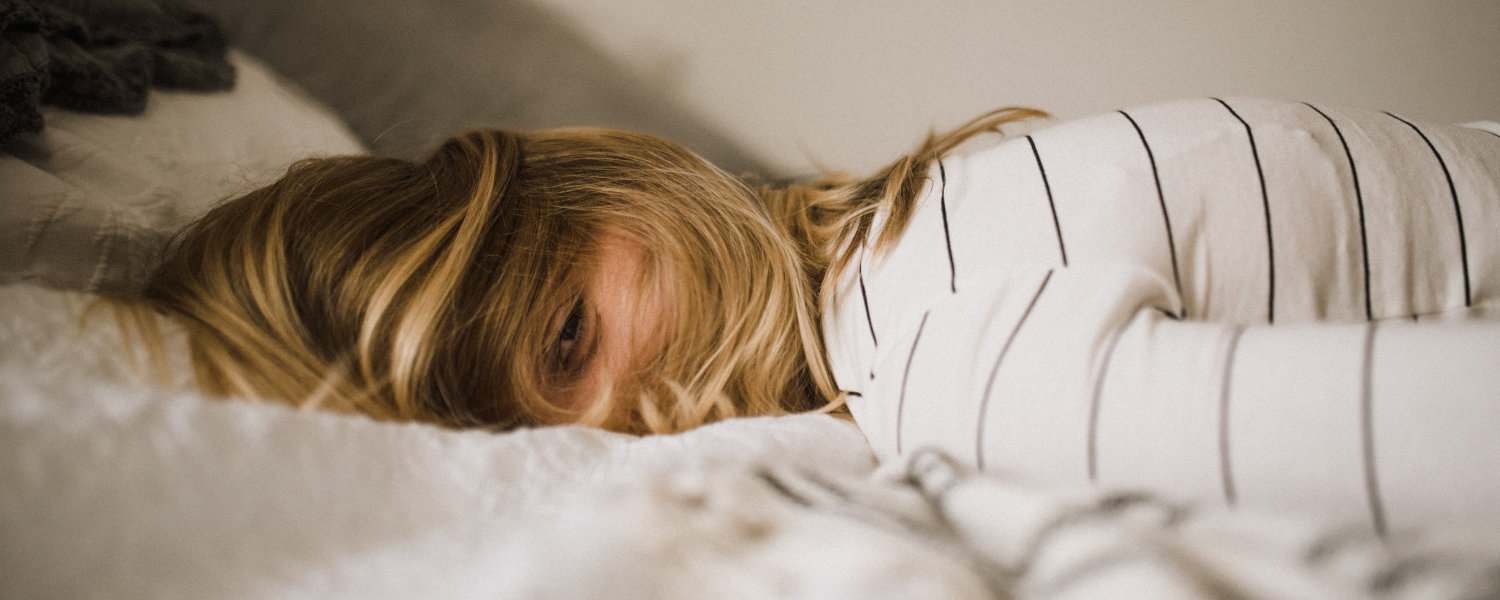In This Article
- What are Low-THC Strains?
- Terpenes and Minor Cannabinoids
- CBD Ratios
- Mild Intoxication
- THC vs. CBD
- THC or CBD?
- Why Choose a Low-THC Strain?
- Milder Intoxicating Effects
- Less Anxiety
- Functional, Daytime Use
- Potential Therapeutic Effects
- THC and CBD at a Closer Ratio
- The Best Low-THC Strains
- Jamaican. 10% THC
- Euphoria. 11% THC, 1% CBG
- Sour Blueberry. 12% THC
- Gold Dawg. 13% THC
- Great White Shark. 14% THC
- Power Plant. 15% THC
- Cannatonic. 4% THC, 9% CBD
- Harlequin. 5% THC, 9% CBD
- Resources
The cannabis industry offers a vast array of strains, each with its own unique combination of compounds and effects. Among these compounds, THC (tetrahydrocannabinol) stands out as the primary intoxicating component.
And while many consumers may focus on high-THC strains,1 the low-THC flower deserves love, too. In fact, low-THC strains may offer a wide array of benefits.2 It’s important to recognize low-THC weed's valuable role in the cannabis world.
What are Low-THC Strains?
“Low-THC” may have different definitions.3 For this guide, “low-THC” strains have less than 10%-15% THC. It's important to clarify these strains from the ultra-low THC strains often defined by certain state medical programs. These medical programs may have THC levels at or near zero for their definition of low-THC cannabis.4
Terpenes and Minor Cannabinoids
Lower-THC cannabis strains still contain a diverse array of minor cannabinoids and terpenes. These compounds work together synergistically in what's often called the "entourage effect."
Minor cannabinoids can include CBG (cannabigerol) and/or CBN (cannabinol). These compounds and various terpenes may contribute to each strain's unique aroma, flavor, and potential therapeutic effects. For example, some terpenes may provide relaxation, while others offer focus and alertness.
CBD Ratios
Many low-THC strains are known for their balanced or higher CBD (cannabidiol) content. CBD is another prominent cannabinoid in cannabis, known for its potential therapeutic properties. These strains often feature a more even THC-to-CBD ratio or, in some cases, higher CBD content than THC.
Overall, the CBD-to-THC ratio offers a more balanced cannabinoid profile to the consumer. The result is a range of potential benefits, including reduced anxiety, pain relief, and anti-inflammatory effects. These come without the strong, intoxicating high associated with high-THC strains.
Mild Intoxication
Overall, even though THC is still present, these strains are much less intoxicating. It’s one of the defining features of low-THC strains. While they may still produce some euphoria or relaxation, it is typically much milder and more manageable.
It’s a worthwhile alternative for consumers seeking a more functional experience. Or, it’s a solution for those looking to avoid the intense, intoxicating effects of certain high-THC strains.
THC vs. CBD
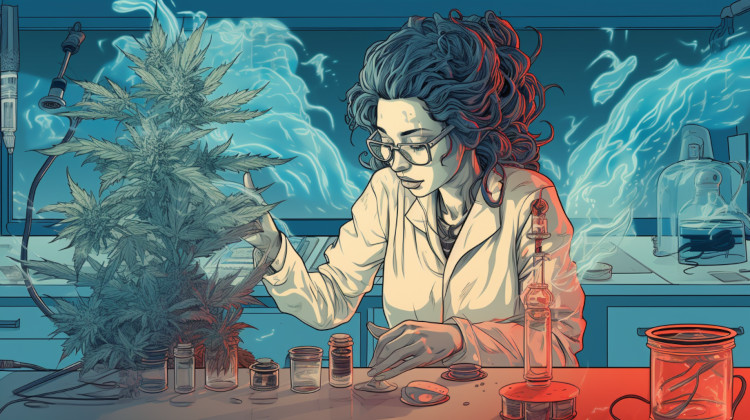
CBD is another prominent cannabinoid in cannabis strains. THC and CBD, together, are two of the most well-known cannabinoids in the plant. However, the two have distinct characteristics.
THC is the primary intoxicating compound in cannabis. It’s responsible for the “high” or euphoria of cannabis consumption. Meanwhile, CBD is its non-intoxicating cousin.
THC is medically sought after for its potential mood-elevating, appetite-stimulating, and/or pain-relieving effects. On the other side of the spectrum, CBD is known for its potential anticonvulsant, anti-inflammatory, and anti-anxiety properties.
Lastly, there are some legal differences between the two compounds. THC’s legal status varies by region. It’s also typically more regulated due to its intoxicating nature. On the other hand, CBD is legal in many places and can be produced through hemp, which is federally legal.
THC or CBD?
There are several reasons why someone may choose one cannabinoid over the other.
A consumer may prefer THC for the relaxation/euphoria it is reported to stimulate. Consumers may also seek THC for sleep, to stimulate appetite, or to get relief from chronic pain.
Alternatively, someone may use CBD for its potential anti-inflammatory and other pain-relieving properties. They may favor CBD for its potential ability to reduce stress/anxiety. It can help some consumers manage various medical conditions without intoxicating effects. Plus, CBD is handy when an area has otherwise strict THC regulations.
Why Choose a Low-THC Strain?
Low-THC strains may offer a range of benefits that make them an attractive choice for many cannabis users.5
Milder Intoxicating Effects
First, they may provide a gentler, more controllable high – or even no noticeable high. That makes low-THC strains appealing to consumers who want to avoid the intoxication from higher THC strains.
Less Anxiety
Second, some high-THC strains may induce anxiety or paranoia, especially in sensitive individuals. Low-THC strains are less likely to trigger these adverse effects, making them safer for those prone to anxiety.
Functional, Daytime Use
In addition, low-THC strains are popular among consumers due to their reported functional activities and daytime use. These strains allow consumers to maintain mental clarity, productivity, and focus while still benefiting from the medicinal properties of cannabis.
Potential Therapeutic Effects
Several studies also explore the therapeutic potential of CBD and balanced THC:CBD ratios. Some studies suggest CBD-rich strains may be effective for conditions related to inflammation, anxiety, chronic pain, and epilepsy.5
THC and CBD at a Closer Ratio
Then, there are balanced THC:CBD ratios in low-THC strains to consider. These may offer the combined benefits of both cannabinoids. The combination could enhance pain relief, reduce anxiety, and provide a well-rounded therapeutic experience.2 That’s without the intoxication associated with high-THC strains, which is a win for some cannabis consumers.
The Best Low-THC Strains
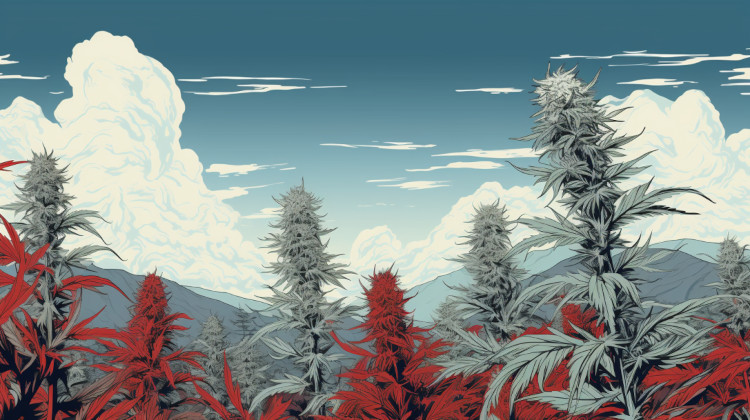
These strains have been reported to offer diverse effects and cater to those seeking a milder cannabis experience. These include some of the lowest THC-producing flowers as well as a selection of cannabis strains offering a good ratio of cannabinoids like CBD.
In addition to these strains, low-THC cannabis products come in various forms, including vape cartridges and edibles. A low-THC cartridge can provide a discreet and convenient way to consume cannabis without heavy intoxication. Meanwhile, edibles offer a tasty alternative for those who prefer not to smoke or vaporize.
Jamaican. 10% THC
With pinene as Jamaicans' most prominent terpene, it stimulates creativity in many consumers. Euphoria and feeling giggly are common effects after consuming this variety. While anecdotal, some users say Jamaican helps with symptoms of depression, stress, and lack of appetite.
Euphoria. 11% THC, 1% CBG
As the name may suggest, Euphoria may produce euphoric effects. Consumers may also feel talkative and/or energetic, as it’s just that kind of strain. In some cases, it has been reported by patients to help with symptoms of anxiety, depression, and certain types of stress.
Sour Blueberry. 12% THC
Reports from cannabis consumers indicate that euphoric and energetic effects may be possible with Sour Blueberry, as is tingling. A cross between Blueberry and Sour Diesel #2, this flower often has orange hairs covering dense, thick buds. Users often report the effects are invigorating and very cerebral.
Gold Dawg. 13% THC
Gold Dawg is a strain bred from crossing Colombian Gold with Chem Dog D. The strain’s effects are characterized by a sense of giggly euphoria, heightened energy, and improved focus. Medical patients have reportedly turned to Gold Dawg to help relieve symptoms of bipolar disorder, anxiety, stress, and more.
Great White Shark. 14% THC
Alternatively recognized as "Peacemaker" or "White Shark," Great White Shark boasts a robust, fruity aroma accented by subtle skunky notes. Though it only contains 14% THC, consumers are still advised to be cautious with its potency. It reportedly carries the potential to alleviate symptoms of chronic pain.
Power Plant. 15% THC
At 15% THC, Power Plant is the highest THC strain on the list. Deriving from African landrace genetics, the strain may deliver a clear-headed, invigorating effect. It’s known by consumers to induce feelings of creativity and happiness.
Cannatonic. 4% THC, 9% CBD
Cross MK Ultra and G13 Haze, and you get Cannatonic. The strain is reported to produce mellow effects that are powerfully relaxing and uplifting for some consumers. Medical patients may turn to this low-THC cannabis for relief from symptoms of a range of conditions. These include migraines, anxiety, muscle spasms, and chronic pain.
Harlequin. 5% THC, 9% CBD
Lastly, Harlequin results from Colombian Gold, a Nepali landrace, and both Thai and Swiss landrace strains. Its notable high CBD levels have established it as one of the most effective options for treating pain and anxiety by consumers.
Resources
- Donnan J, Shogan O, Bishop L, Swab M, Najafizada M. Characteristics that influence purchase choice for cannabis products: a systematic review. Journal of Cannabis Research. 2022;4(1). doi:https://doi.org/10.1186/s42238-022-00117-0
↩︎ - Pacher P, Kogan NM, Mechoulam R. Beyond THC and Endocannabinoids. Annual Review of Pharmacology and Toxicology. 2019;60(1). doi:https://doi.org/10.1146/annurev-pharmtox-010818-021441
↩︎ - Leos-Toro C, Fong GT, Meyer SB, Hammond D. Cannabis labelling and consumer understanding of THC levels and serving sizes. Drug and Alcohol Dependence. 2020;208:107843. doi:https://doi.org/10.1016/j.drugalcdep.2020.107843
↩︎ - Cash MC, Cunnane K, Fan C, Romero-Sandoval EA. Mapping cannabis potency in medical and recreational programs in the United States. PLoS One. 2020;15(3):e0230167. Published 2020 Mar 26. doi:10.1371/journal.pone.0230167
↩︎ - Moltke J, Hindocha C. Reasons for cannabidiol use: a cross-sectional study of CBD users, focusing on self-perceived stress, anxiety, and sleep problems. Journal of Cannabis Research. 2021;3(1). doi:https://doi.org/10.1186/s42238-021-00061-5
↩︎
The information in this article and any included images or charts are for educational purposes only. This information is neither a substitute for, nor does it replace, professional legal advice or medical advice, diagnosis, or treatment. If you have any concerns or questions about laws, regulations, or your health, you should always consult with an attorney, physician or other licensed professional.

